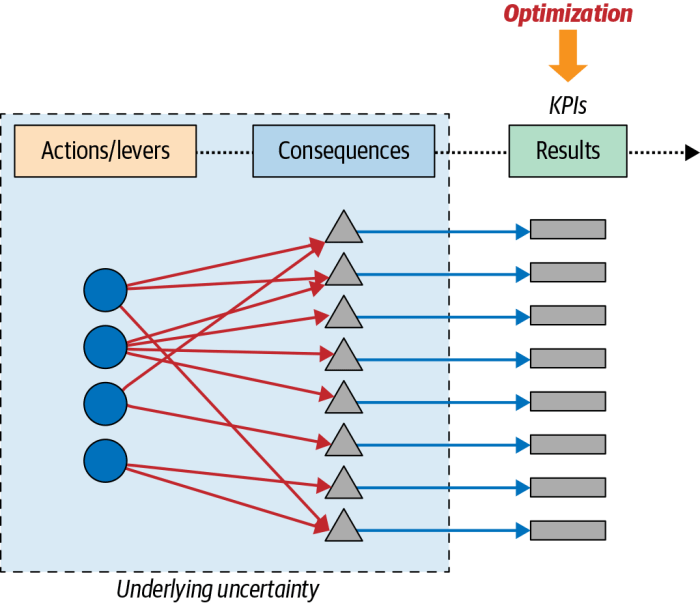Get ready to dive into the world of Using Analytics for Optimization, where data-driven strategies reign supreme. From revolutionizing industries to enhancing outcomes, analytics is the name of the game. Let’s explore how businesses leverage analytics to unlock their full potential.
Whether you’re a data enthusiast or just getting started, this guide will walk you through the ins and outs of using analytics for optimization.
Introduction to Using Analytics for Optimization

Analytics for optimization involves using data analysis to improve processes and outcomes by making informed decisions based on insights gained from the data.
By utilizing analytics, businesses and organizations can identify patterns, trends, and opportunities that can lead to more efficient operations, cost savings, and better overall performance.
Examples of Industries Benefiting from Analytics for Optimization
- Retail: Retailers use analytics to optimize pricing strategies, inventory management, and personalized marketing campaigns based on customer behavior data.
- Healthcare: Healthcare providers use analytics to improve patient outcomes, resource allocation, and operational efficiency by analyzing patient data and treatment effectiveness.
- Finance: Financial institutions use analytics to detect fraud, assess risk, and optimize investment strategies by analyzing market trends and customer transactions.
Types of Analytics for Optimization
Analytics play a crucial role in optimizing various aspects of a business or operation. There are different types of analytics used for optimization, including descriptive, predictive, and prescriptive analytics. Each type contributes in its unique way to enhancing efficiency and making informed decisions.
Descriptive Analytics
Descriptive analytics involves analyzing historical data to understand past performance and trends. It provides insights into what has happened in the past and helps in identifying patterns. For example, a retail store can use descriptive analytics to analyze sales data from the previous year to identify peak selling periods.
Predictive Analytics
Predictive analytics utilizes historical data and statistical algorithms to forecast future outcomes. It helps in predicting trends and behaviors based on patterns identified in the data. For instance, an e-commerce website can use predictive analytics to forecast customer demand for certain products during a holiday season.
Prescriptive Analytics
Prescriptive analytics goes a step further by providing recommendations on what actions to take to achieve a desired outcome. It considers various constraints and objectives to suggest the best course of action. A transportation company can use prescriptive analytics to optimize delivery routes and schedules for maximum efficiency.
Implementing Analytics Tools for Optimization
When it comes to optimizing processes or systems, using the right analytics tools can make a world of difference. Here, we will explore the key analytics tools commonly used for optimization purposes, how to integrate them into existing workflows, and best practices for effective implementation.
Key Analytics Tools for Optimization
Before diving into implementation, it’s essential to identify the primary analytics tools that are commonly used for optimization:
- Google Analytics: A powerful tool for tracking website traffic, user behavior, and conversion rates.
- Adobe Analytics: Provides advanced analytics capabilities for measuring customer interactions across various channels.
- Kissmetrics: Focuses on customer engagement and retention metrics to optimize marketing strategies.
- Tableau: Enables visualization of data to identify patterns and trends for optimization opportunities.
Integrating Analytics Tools into Existing Workflows
Integrating analytics tools into existing systems or workflows involves the following steps:
- Evaluate current workflow and identify areas for optimization.
- Select the appropriate analytics tools based on the optimization goals.
- Integrate the chosen tools with existing systems or platforms.
- Train team members on how to use the analytics tools effectively.
- Regularly review and analyze data to make informed decisions for optimization.
Best Practices for Implementing Analytics Tools
To ensure the successful implementation of analytics tools for optimization, consider the following best practices:
- Set clear goals and objectives for using analytics tools to drive optimization strategies.
- Ensure data accuracy and reliability by regularly monitoring and validating the data collected.
- Collaborate cross-functionally to leverage insights from analytics tools for holistic optimization.
- Use A/B testing and experimentation to validate optimization strategies before full implementation.
- Continuously optimize and refine analytics processes based on data-driven insights and feedback.
Analyzing Data for Optimization

Data analysis plays a crucial role in the optimization process by providing valuable insights that can drive decision-making and improve outcomes. By examining and interpreting data, businesses can identify trends, patterns, and correlations that can help them optimize their operations, marketing strategies, and overall performance.
Techniques and Methodologies for Data Analysis, Using Analytics for Optimization
- Descriptive Analytics: This technique involves summarizing historical data to gain a better understanding of past performance and trends.
- Predictive Analytics: By using statistical algorithms and machine learning techniques, predictive analytics can forecast future outcomes based on historical data.
- Prescriptive Analytics: This methodology goes a step further by recommending actions to optimize outcomes based on predictive insights.
Examples of Data Analysis for Optimization
- Netflix Recommendation System: Netflix analyzes user data, such as viewing history and preferences, to recommend personalized content, leading to increased user engagement and retention.
- Amazon Supply Chain Optimization: Amazon uses data analysis to optimize its supply chain operations, reducing costs and improving delivery efficiency.
- Google AdWords Optimization: Google analyzes click-through rates and conversion data to optimize advertising campaigns for better ROI.






